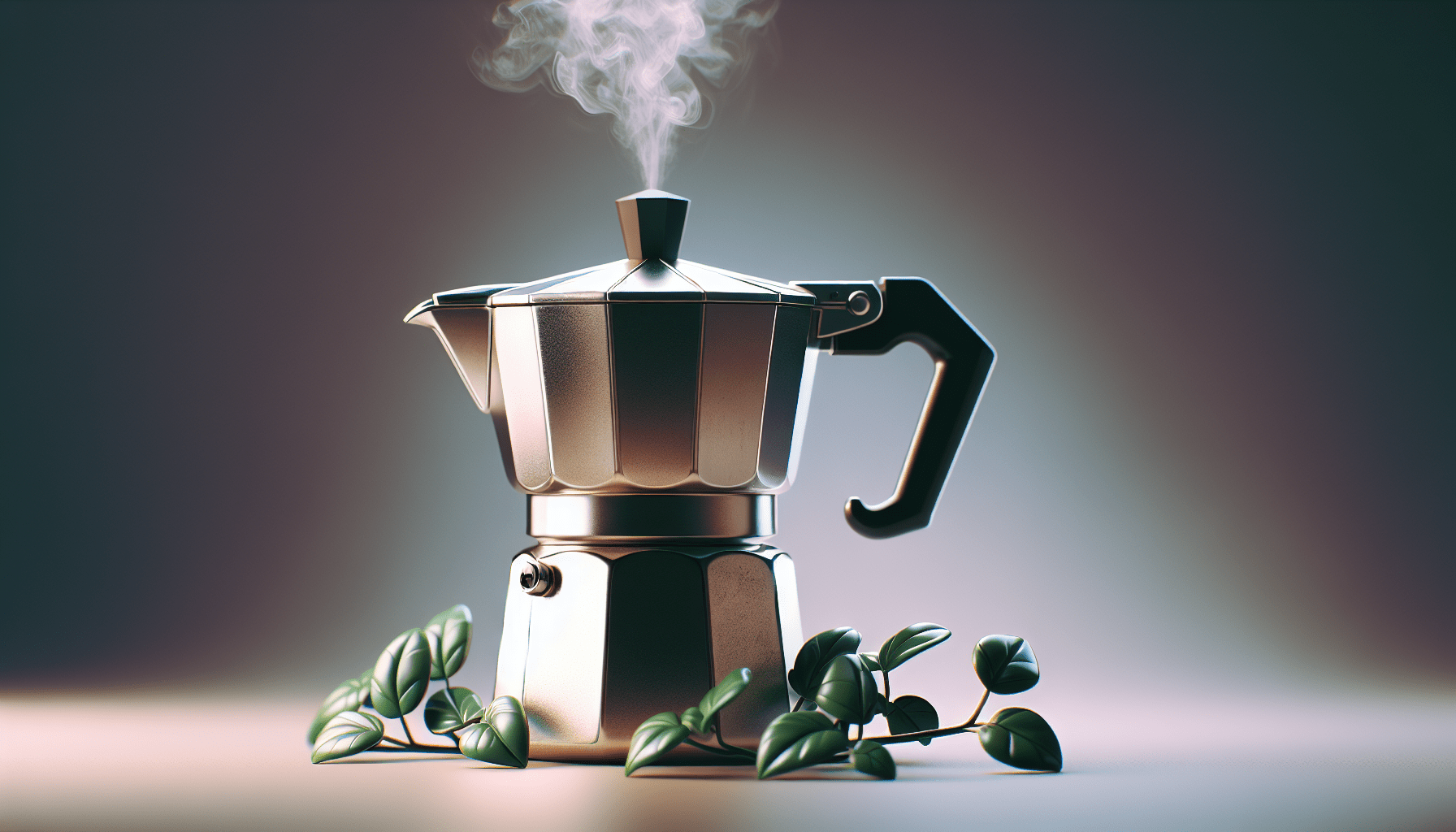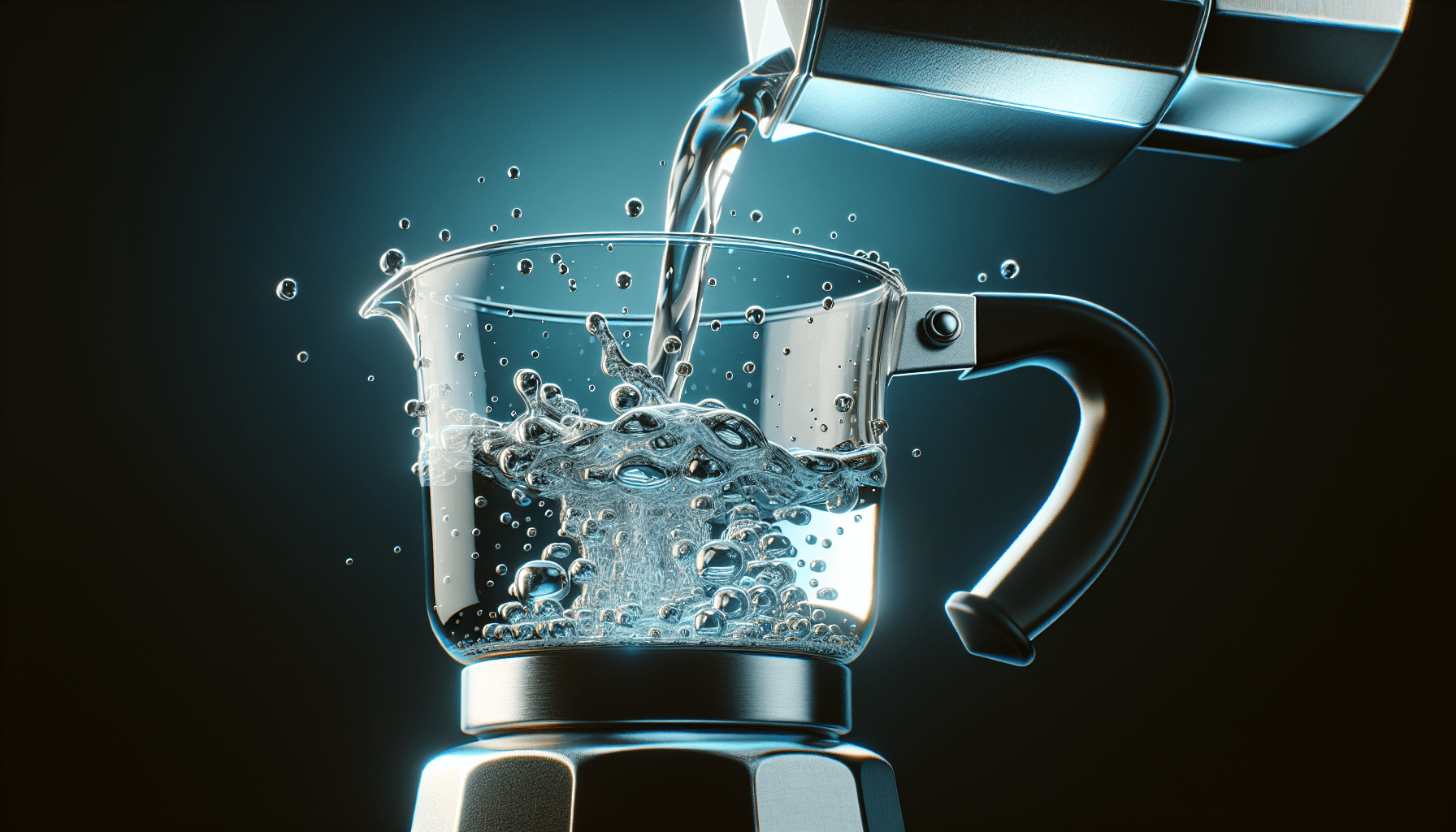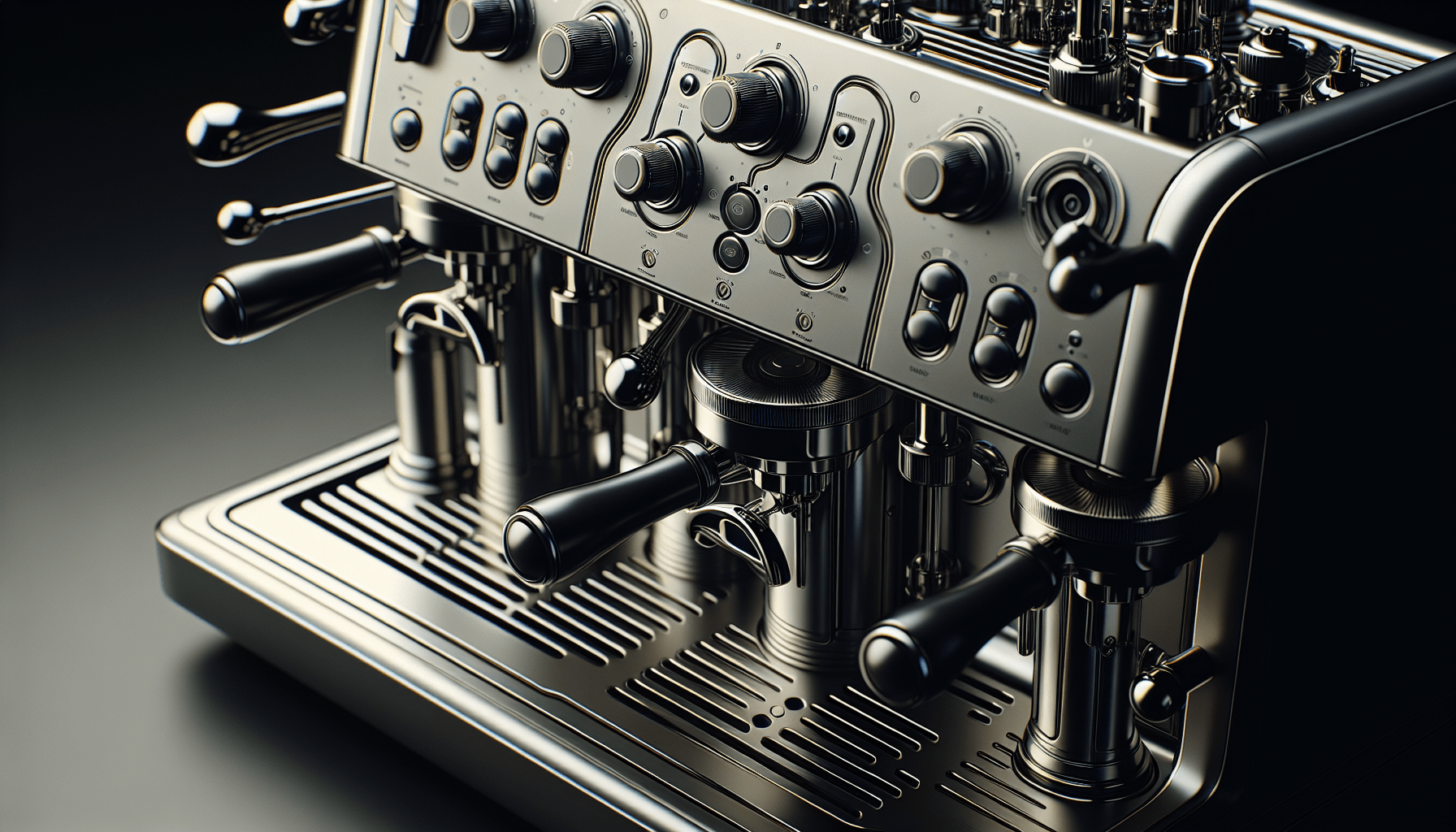Are you a coffee lover who is considering investing in a stovetop espresso maker? If so, you may be wondering if these sleek and compact devices allow for any control over the strength of your brew. Well, the answer is yes! In this article, we will explore how you can easily adjust the brew strength to suit your personal taste using a stovetop espresso maker. From tips on grinds and water ratio to techniques for achieving the perfect balance of flavors, you’ll soon be on your way to creating your ideal cup of espresso from the comfort of your own kitchen.
Understanding Stovetop Espresso Makers
What is a stovetop espresso maker?
A stovetop espresso maker, also known as a moka pot or Italian coffee maker, is a classic coffee brewing device that is widely used for creating a strong and flavorful espresso-like coffee at home. It consists of three main parts: a bottom chamber for water, a middle chamber for ground coffee, and a top chamber where the brewed coffee collects.
How does a stovetop espresso maker work?
The stovetop espresso maker functions on the principle of water pressure and steam extraction. When the pot is heated on a stovetop, the water in the bottom chamber turns into steam, building pressure. This pressure then forces the hot water to rise through the ground coffee in the middle chamber, extracting the coffee’s oils, flavors, and aromas. Finally, the brewed coffee travels up into the top chamber, ready to be enjoyed.
Benefits of using a stovetop espresso maker
There are several advantages to using a stovetop espresso maker:
- Convenience: Stovetop espresso makers are compact, easy to use, and don’t require any electricity. They are perfect for small kitchens or outdoor use.
- Affordability: Compared to other espresso machines, stovetop espresso makers are relatively inexpensive and accessible to everyone.
- Versatility: Stovetop espresso makers can brew a strong espresso-like coffee, but they can also be used to make milder coffee by adjusting the brewing technique.
- Portability: Due to their compact size and ability to work without electricity, stovetop espresso makers are ideal for camping, traveling, or any situation where access to a traditional espresso machine may be limited.
Factors Affecting Brew Strength
Ground coffee to water ratio
The ratio of ground coffee to water is a crucial factor in determining the strength of the brew. Generally, a higher coffee to water ratio will result in a stronger and more concentrated espresso. However, it’s important to find the right balance to avoid an overly bitter or imbalanced flavor.
Heat source and temperature control
The heat source and temperature play a significant role in the extraction process. Using a stovetop espresso maker allows you to control the heat source, such as a gas or electric stove, and adjust the temperature accordingly. Higher heat can lead to faster extraction and a stronger brew, while lower heat can result in a milder extraction.
Brewing time
The duration of the brewing process affects the strength of the coffee. Longer brewing times generally produce a stronger brew, as more of the coffee’s flavors are extracted. However, brewing for too long can lead to over-extraction and bitterness, so finding the optimal brewing time is crucial.
Quality of coffee beans
The quality of the coffee beans used greatly impacts the strength and taste of the final brew. Opting for freshly roasted, high-quality beans will ensure a more flavorful and robust cup of coffee. Experimenting with different varieties and origins can also provide a range of flavor profiles, allowing you to find your preferred brew strength.
Grind size
The size of the coffee grounds plays a significant role in brew strength. Finer grounds extract more quickly and thoroughly, resulting in a stronger brew, while coarser grounds require longer extraction times and produce a milder cup of coffee. Adjusting the grind size to match your desired brew strength is key to achieving the perfect balance.
Adjusting Brew Strength
Modifying the ground coffee to water ratio
To adjust the brew strength, start by experimenting with the ground coffee to water ratio. Increase the amount of coffee and decrease the amount of water for a stronger brew, or vice versa for a milder result. It’s important to remember that small adjustments can make a significant difference, so start by making subtle changes and keep track of your preferred ratios.
Controlling the heat source and temperature
Controlling the heat source and temperature is another way to adjust brew strength. If you prefer a stronger coffee, increase the heat and shorten the brew time. If you prefer a milder coffee, lower the heat and extend the brewing process. Monitoring and adjusting the temperature throughout the brewing process ensure optimal flavor extraction.
Adjusting brewing time
Experimenting with different brewing times can also help fine-tune the brew strength. Longer brewing times generally result in a stronger flavor, while shorter brewing times produce a milder taste. Keep in mind that brewing for too long can lead to bitterness, so finding the right balance is essential.
Choosing the right coffee beans and grind size
The choice of coffee beans and grind size directly affects the brew strength. If you prefer a stronger cup, select dark or espresso roast beans with a finer grind. For a milder taste, opt for medium roast beans with a coarser grind. Adjusting these factors allows you to customize your brew strength according to your preferences.
Modifying the Ground Coffee to Water Ratio
Understanding the brew ratio
The brew ratio refers to the proportion of coffee to water used in the brewing process. It is usually expressed as a ratio, such as 1:2 or 1:3, indicating the amount of coffee in relation to the amount of water. For example, a ratio of 1:2 means using 1 part coffee to 2 parts water. The brew ratio has a significant impact on the strength and intensity of the resultant coffee.
Experimenting with different ratios
To adjust the brew strength, you can experiment with different brew ratios. Start by altering the ratio in small increments, such as increasing the coffee amount by a few grams while keeping the water amount constant. Alternatively, you can decrease the coffee amount while keeping the water amount constant. These adjustments will allow you to find your preferred ratio for the desired brew strength.
Effect on brew strength and flavor
Modifying the ground coffee to water ratio will directly impact the brew strength and flavor profile. A higher ratio, with more coffee compared to water, will result in a stronger and more intense brew, with pronounced flavors and a rich body. Conversely, a lower ratio will produce a milder brew, with a lighter body and less strong flavors. It’s important to strike the right balance to achieve a well-rounded and enjoyable cup of coffee.
Controlling the Heat Source and Temperature
Using the right heat source
Choosing the appropriate heat source is vital for controlling brew strength. Gas stoves are often recommended for stovetop espresso makers, as they provide more precise heat control. Electric stoves can be used as well, but it may be helpful to use a heat diffuser to distribute the heat evenly. The type of heat source can affect the speed and intensity of extraction, ultimately impacting the brew strength.
Monitoring and adjusting the temperature
Monitoring and adjusting the temperature during the brewing process is crucial to achieving the desired brew strength. If a stronger coffee is desired, ensure the heat source is set to a higher temperature. Conversely, lower the heat source for a milder brew. It’s important to pay close attention to the temperature throughout the brewing process to avoid over-extraction or under-extraction.
Impact on brew strength and extraction
Controlling the heat source and temperature can significantly impact the brew strength and extraction efficiency. Higher temperatures often lead to faster extraction, resulting in a stronger brew. On the other hand, lower temperatures can slow down extraction, leading to milder flavors. By carefully managing the heat source and temperature, you can achieve a well-balanced and personalized brew strength.
Adjusting Brewing Time
Understanding the relationship between brewing time and strength
The brewing time has a direct relationship with the brew strength. Long brewing times generally yield a stronger coffee, as more of the coffee’s flavors and compounds are extracted. Alternatively, shorter brewing times produce a milder taste since the extraction is not as thorough. By varying the brewing time, you can fine-tune the strength of your coffee to match your preferences.
Experimenting with shorter or longer brewing time
To adjust the brew strength, experiment with shorter or longer brewing times. Start by trying a shorter brewing time to achieve a milder cup of coffee. If you desire a stronger brew, extend the brewing time gradually until the desired strength is achieved. Keep in mind that each coffee brand and grind size may require slight adjustments to the brewing time.
Effects on brew strength and taste profile
The length of the brewing time directly affects the brew strength and taste profile. A shorter brewing time will result in a milder cup with less intense flavors. On the other hand, a longer brewing time will produce a stronger coffee with more pronounced flavors and a fuller body. It’s essential to find the right balance and brewing time to create a coffee that suits your taste preferences.
Choosing the Right Coffee Beans and Grind Size
Selecting coffee beans for desired strength
Choosing the right coffee beans is essential to achieve the desired brew strength. Dark or espresso roast beans typically have a stronger and more intense flavor profile, making them suitable for those seeking a robust cup of coffee. Medium roast beans offer a balanced flavor and are a good choice for those who prefer a milder brew. Experimenting with different bean varieties can help you find the perfect match for your preferred strength.
Exploring different grind sizes and extraction levels
Grind size plays a vital role in brew strength since it determines the surface area of the coffee exposed to water. Finer grind sizes extract more quickly, resulting in a stronger cup, while coarser grind sizes require longer extraction times and produce a milder brew. By exploring different grind sizes, you can fine-tune the extraction levels and achieve the desired brew strength.
Influence on brew strength and flavor
The choice of coffee beans and grind size directly affects the brew strength and flavor. Dark roast beans and finer grind sizes typically yield a stronger and more intense coffee, while medium roast beans and coarser grinds provide a milder taste. It’s important to consider the desired strength and flavor profile when selecting coffee beans and adjusting the grind size to achieve the desired results.
Tips and Tricks for Adjusting Brew Strength
Keeping a brew strength journal
Maintaining a brew strength journal can be incredibly helpful in finding the perfect balance for your preferred strength. Note down the coffee-to-water ratios, brewing times, grind sizes, and other variables used for different cups of coffee. This will allow you to track your preferences, make adjustments as needed, and replicate successful brewing processes.
Using a coffee scale for precise measurements
Investing in a coffee scale can greatly improve your ability to adjust brew strength accurately. By precisely measuring the coffee and water amounts, you can ensure consistency and experiment more effectively with different ratios. A coffee scale helps maintain a reliable brew-to-water ratio and eliminates any guesswork, resulting in a more precise brewing process.
Experimenting with different variables
Adjusting brew strength is a process of trial and error. Don’t be afraid to experiment with different variables, such as coffee beans, grind sizes, brewing times, and water temperatures. By exploring the various combinations, you can discover your preferred brew strength. Remember to make small adjustments and take note of the outcomes to fine-tune your brewing technique.
Common Mistakes to Avoid
Using low-quality coffee beans
The quality of the coffee beans used greatly affects the brew strength and overall taste. Using low-quality beans can result in a less flavorful and uninspiring cup of coffee. Investing in high-quality, freshly roasted beans ensures a more satisfying brew with robust flavors and aromas. Choose beans that suit your preferred brew strength to enhance the overall coffee experience.
Inconsistent grind size
Inconsistent grind size can lead to uneven extraction and variations in the brew strength. Ensure you have a consistent grind size throughout the coffee beans to promote even and thorough extraction. Invest in a quality burr grinder for precise and consistent grinding. Consistency in grind size helps achieve a balanced brew strength and ensures even flavors in every cup.
Neglecting temperature control
Temperature control is crucial for achieving the desired brew strength. Neglecting temperature control can lead to under-extraction or over-extraction of the coffee. Always monitor the temperature during the brewing process, adjusting it as needed to maintain optimal extraction. Consistent and proper temperature control ensures a well-balanced and flavorful brew.
Conclusion
Achieving the desired brew strength with a stovetop espresso maker is indeed possible and offers a unique and customizable coffee experience. Understanding the factors affecting brew strength, such as the ground coffee to water ratio, heat source and temperature control, brewing time, coffee beans, and grind size, allows you to adjust and fine-tune your coffee to suit your preferences. By experimenting with these variables and utilizing tips and tricks, you can create a personalized and satisfying cup of coffee with your stovetop espresso maker. Enjoy the journey of exploring different brew strengths and savoring the flavors that suit your taste buds.



